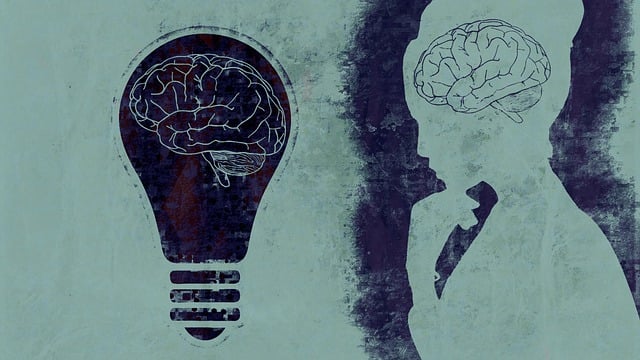Greenwood Village's Crisis Intervention Teams (CITs) are key to addressing mental health crises and substance abuse issues in community settings, focusing on early intervention, de-escalation, and long-term care. Their training equips healthcare providers with evidence-based skills, cultural competency, and stress management for consistent, compassionate crisis management. The program faces challenges in translating theory into practice, especially creating non-stigmatizing environments, but ongoing supervision and risk management ensure safe and effective treatment for Drug Abuse-Substance Use Disorders (ASUD) in Greenwood Village Drug Abuse-Substance Abuse Therapy settings.
Greenwood Village, like many communities, faces the challenge of addressing drug abuse and substance use disorders. Crisis Intervention Team (CIT) training programs play a crucial role in equipping community members with the skills to respond effectively during mental health crises. This article delves into the significance of CITs in Greenwood Village, exploring key components of comprehensive training programs. We also discuss practical implementation strategies and challenges, emphasizing the importance of accessible Drug Abuse-Substance Use therapy for community well-being.
- Understanding Crisis Intervention Teams (CITs): Role and Importance in Greenwood Village
- Key Components of Effective CIT Training Programs
- Practical Implementation and Challenges in Training for Drug Abuse-Substance Use Disorders in the Community
Understanding Crisis Intervention Teams (CITs): Role and Importance in Greenwood Village

In Greenwood Village, Crisis Intervention Teams (CITs) play a pivotal role in addressing mental health crises and substance abuse issues. These specialized teams are designed to provide immediate and effective support to individuals experiencing severe emotional distress or addiction, often in community settings. The CIT approach emphasizes early intervention, de-escalation techniques, and connection to long-term care options, thereby reducing the reliance on emergency room visits and hospitalizations.
By training healthcare providers, first responders, and other community members as part of CIT programs, Greenwood Village fosters a network of support that prioritizes prevention and proactive management of crises. This collaborative effort not only enhances the quality of life for those affected but also contributes to the overall well-being of the community. Furthermore, promoting self-care practices among healthcare providers is an integral aspect of CIT training, considering burnout prevention strategies are crucial in maintaining a consistent and compassionate response to crises over time.
Key Components of Effective CIT Training Programs

Effective crisis intervention team (CIT) training programs are multifaceted and comprehensive, designed to equip healthcare providers with the skills needed to address a range of mental health crises. A key component is evidence-based practice, ensuring interventions align with current research in mental health policy analysis and advocacy. This includes understanding the nuances of substance abuse therapy, as seen in Greenwood Village’s approach to drug abuse treatment, to effectively de-escalate situations.
Additionally, these programs prioritize stress management techniques for providers, fostering resilience against burnout and enabling them to offer consistent support. Cultural competency training is another vital aspect, equipping healthcare providers with insights into diverse cultural perspectives and practices, enhancing their ability to connect with individuals from various backgrounds during crises.
Practical Implementation and Challenges in Training for Drug Abuse-Substance Use Disorders in the Community

Implementing effective crisis intervention training for Drug Abuse-Substance Use Disorders (ASUD) within communities presents unique challenges. One significant hurdle is translating theoretical knowledge into practical, real-world applications. Training programs must equip participants with skills to handle diverse and often complex situations involving individuals struggling with ASUD. This includes learning de-escalation techniques, crisis assessment, and appropriate interventions while navigating the sensitive nature of these issues.
A notable challenge lies in fostering an environment that encourages open discussion about drug abuse without stigmatizing individuals. Training should promote empathy and understanding, allowing professionals to connect with clients from various backgrounds. Moreover, integrating stress management workshops and resilience-building activities within the curriculum can enhance participants’ well-being and sustain their capacity to support others effectively. Effective programs also emphasize ongoing supervision and risk management planning for mental health professionals, ensuring they can safely and competently address ASUD crises in the community.
Crisis Intervention Team (CIT) training programs play a vital role in equipping community members with the skills to address mental health crises, particularly in cases of drug abuse and substance use disorders. As seen in Greenwood Village, these teams can significantly improve outcomes by providing timely and effective interventions. By focusing on evidence-based practices and incorporating practical scenarios, CIT training empowers individuals to make a real difference in their communities. However, ongoing support and resources are necessary to overcome implementation challenges, ensuring that trained CIT members can provide consistent and quality care. Effective programs enhance the overall well-being of Greenwood Village residents through comprehensive drug abuse-substance use therapy and crisis management.














